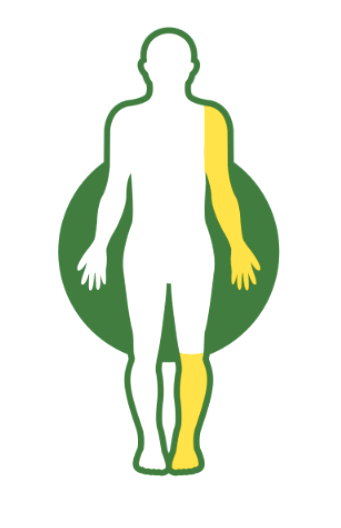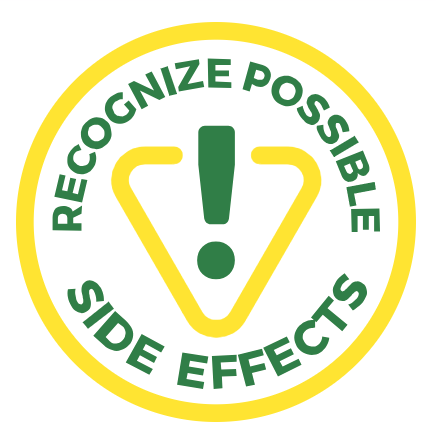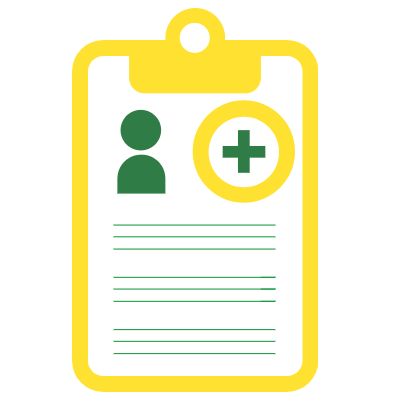
Why Dysport®?
The return of life-disrupting spasticity symptoms between injections can feel relentless and frustrating, making simple things in life, like walking and dressing, difficult again. Dysport can provide relief from muscle stiffness and associated pain for up to 12 weeks or longer, allowing you to spend more time doing what matters to you.

Why Dysport®?
The return of life-disrupting spasticity symptoms between injections can feel relentless and frustrating, making simple things in life, like walking and dressing, difficult again. Dysport can provide relief from muscle stiffness and associated pain for up to 12 weeks or longer, allowing you to spend more time doing what matters to you.
How Dysport works
How Dysport works

Dysport is a type of prescription medicine called botulinum toxin type A that is injected into muscles affected by spasticity, temporarily blocking the signals that cause muscles to tighten (contract)
It is an injection you receive right in your doctor’s office
Study results showed that most patients needed treatment again between 12 and 16 weeks; however, some had a longer response and were treated again at 20 weeks
The next Dysport treatment should not be given sooner than 12 weeks after the last Dysport treatment session. Your doctor will assess your spasticity at each treatment session and may adjust the dose and muscles injected.
How Dysport worked in clinical trials

For adults with upper limb spasticity, approximately 3 out of 4 patients had a response to treatment at week 4, as measured by a reduction in stiffness in the elbow, wrist, or finger muscles
For most patients, improvement was seen 1 week after treatment
Study design:
A placebo-controlled study of 238 adult patients with upper limb spasticity due to stroke or traumatic brain injury. About half of patients had never been treated with botulinum toxins, while the other half had received prior treatment with a botulinum toxin. At week 4, doctors assessed improvement in muscle tone, as well as reduction in stiffness (elbow, wrist, and finger muscles), and overall responsiveness to treatment.

For adults with lower limb spasticity, nearly half of patients treated with Dysport had a response to treatment at week 4, as measured by a reduction in muscle stiffness at the ankle joint.
For some patients, improvement was seen 1 week after treatment.
Study design:
A study of 381 adults with lower limb spasticity after stroke or traumatic brain injury; about 2 out of 3 were new to treatment, while the rest had received treatment before. Patients received Dysport or placebo for 4 weeks. At week 4, doctors checked the ankle for improvement in muscle tone.
A History of FDA Approval
Duration of FDA approval is not intended to imply superiority in efficacy or safety of Dysport
Safety & Side Effects
Dysport safety and side effects

Recognize possible side effects—and know what to do about them.
The most common side effects of Dysport in adults with upper limb spasticity include:
muscle weakness
The most common side effects of Dysport in adults with lower limb spasticity include:
muscle weakness
pain in your arms or legs
fall
When you take any medicine, it’s important to understand how it may affect your body.
While you and your doctor are considering treatment with Dysport, talk about possible common and serious side effects. Tell your doctor if you have any side effect that bothers you or that does not go away. These are not all the possible side effects of Dysport. For more information, ask your doctor or pharmacist or read the Full Prescribing Information. You are encouraged to report negative side effects of prescription drugs to the FDA. Visit www.fda.gov/medwatch or call 1-800-FDA-1088.
The most important safety information you should know about Dysport
Dysport may cause serious side effects, including problems breathing or swallowing and/or spread of toxin effects, that can be life threatening and death can happen as a complication. These problems can happen within hours, or days to weeks after an injection of Dysport.
Who should not take Dysport
Do not take Dysport if you are allergic to Dysport or any of the ingredients in Dysport
(See Medication Guide for ingredients), or are allergic to cow’s milk protein; had an allergic reaction to any other botulinum toxin product, such as Botox®, Xeomin®, or Myobloc®; or have a skin infection at the planned injection site.
Discussing Dysport With Your Doctor
Talk to your doctor about Dysport

Your doctor is your best source of information about adult spasticity. Ask your doctor whether Dysport may be a treatment option for you. Whether you have just been diagnosed with spasticity or you are looking to start treatment, you probably have a lot of questions. Here are a few you may want to ask to get the conversation started:
- What should I expect from Dysport treatment?
- How will I know that Dysport therapy is working?
- When should I schedule another treatment session?
- What is the Important Safety Information I should know about Dysport?
- What are the possible side effects of Dysport?
Your medical history

Before starting treatment with Dysport, you should tell your doctor about all of your medical conditions, especially any that may affect your muscles and nerves.
You should also inform your doctor of all other medical conditions, including if you have or have had:
- Any problems breathing, swallowing, or bleeding
- A slow or irregular heartbeat or rhythm
- Diabetes
- Any side effect or allergy to any botulinum toxin product
Also, let your doctor know if you are:
- Planning to have surgery
- Pregnant or plan to become pregnant; it is not known if Dysport can harm your unborn baby
- Breastfeeding or planning to breastfeed; it is not known if Dysport can pass into breast milk
Prior treatment

It is important to inform your doctor if you have ever received any other botulinum toxin products in the past or had an allergic reaction to Botox, Xeomin, or Myobloc,* or had treatment with any of these products in the last 4 months.
Also, let your doctor know if you have recently received an antibiotic by injection or are currently taking any prescription or nonprescription medications, muscle relaxants, sleep medicines, allergy/cold medicines, vitamins, or herbal supplements.
Before starting any new medicines, be sure to tell your doctor if you have ever had treatment with Dysport.
You can receive treatment with Dysport even if you have been treated with another botulinum toxin in the past, such as Botox, Xeomin, or Myobloc.*
Dysport was studied in adults with spasticity, including those who had:
Already used another botulinum toxin
Never used any botulinum toxin
Tell your doctor if you have received any botulinum toxin product in the last 4 months and which product you received. Do not take Dysport if you had any allergic reaction to any of these other botulinum toxin products.
Dysport should be given at least 12 weeks after the last injection. Also inform your doctor if you are allergic to any of the inactive ingredients in Dysport, including human albumin or cow’s milk protein.
*Botox®, Xeomin®, and Myobloc® are registered trademarks of their respective owners.


